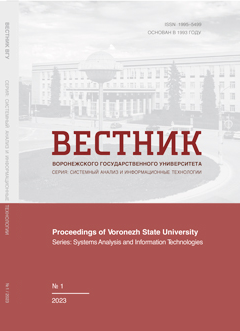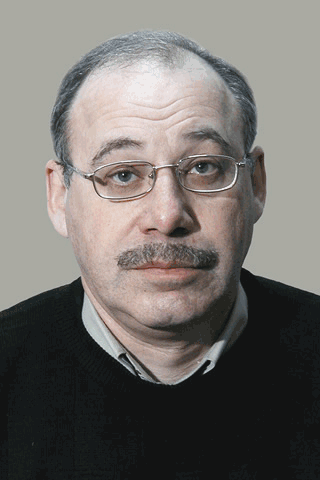Применение нейросетевых моделей NLP для оценки эффективности мероприятий по формированию комфортной городской среды
Аннотация
Формирование комфортной городской среды является одной из актуальных задач современного градостроительства. Для реализации этой задачи в 2018 г. Президентом и правительством Российской Федерации дан старт национальному проекту «Жилье и городская среда», в рамках которого определен исчерпывающий перечень мероприятий по формированию комфортной городской среды. Цель работы формирование рейтинга эффективности таких мероприятий на основе анализа текстов сообщений граждан, пользователей социальных сетей, текстов публикаций в СМИ и описаний мероприятий проводимых на данной территории. В основу предлагаемого подхода положена оценка семантической близости описания мероприятий из набора датасетов по определенной территории. На основе сформированных для конкретных муниципальных образований датасетов выявлено расхождение ожиданий граждан с реализованными мероприятиями на данной территории.
Скачивания
Литература
2. Decree of the Government of the Russian Federation of March 23, 2019 No. 510-r (as amended on December 30, 2020) “On Approval of the Methodology for Forming the Urban Environment Quality Index”. (In Russian)
3. Koroleva P. and Bochanov M. (2019) The urban environment quality index as a way to assess the state policy for the formation of a comfortable urban environment. Sbornik nauchnyh statej VI Mezhdunarodnoj nauchnojkonferencii studentov i molodyh uchenyh: v 3 t. T. 1: Ekonomika. Gumanitarnye nauki [Collection of scientific articles of the VI International Scientific Conference of Students and Young Scientists: in 3 vols. Vol. 1: Economics. Humanities]. Kursk; P. 306– 312. (In Russian)
4. Demenev A. G., Shubina T. F., Shubina P. V., Nenasheva M. V., Makulin A. V. and Tarasov I. A. (2018) Public participation in planning a comfortable urban environment: case of the Arkhangelsk region Arctic and North. (33). P. 91–117. (In Russian) DOI
5. Dmitrieva N. N. and Ipatova T. M. (2018) Formation of comfort city environment – as a strategic direction of development of the project «Housing and city environment». Social and Economic Management: Theory and Practice. 1 (32). P. 95–98. (In Russian)
6. Muhametov D. R. (2020) Models of citizen engagement platforms for creating a new generation of smart cities in Russia. Russian Journal of Innovation Economics. 10(3). P. 1605–1622. (In Russian)
7. Wenshu Li, T. Feng, H. Timmermans, Zhigang Li, M. Zhang and Bowen Li (2020) Analysis of citizens’ motivation and participation intention in urbanplanning. Cities. 106. P. 102921. DOI
8. Order of the Ministry of Construction of Russia No. 913/pr dated December 30, 2020 “On approval of guidelines for the involvement of citizens, their associations and other persons in resolving issues of the development of the urban environment”. (In Russian)
9. Making the city more comfortable. (2022) URL
10. Belyakova E. A., Moskvin R. N., Yurova V. S. and Utyugova E. S. (2019) Approaches to Quality Assessment of City Environment. PGUAS Bulletin: construction, science and education. 2(9). P. 3–9. (In Russian)
11. Notman O. V. (2021) Index Method for Assessing the Quality of the Urban Environment: International and Russian Experience. Vestnik Adygejskogo gosudarstvennogo universiteta. Seriya 1: Regionovedenie: filosofiya, istoriya, sociologiya, yurisprudenciya, politologiya, kul’turologiya. 2(279). P. 89–99. (In Russian)
12. Strigunov V. V. and Bocharova T. A. (2021) Assessment of the State of the City of Khabarovsk by Federal Indices of the Urban Environment and IQ of Cities. Uchenye zametki TOGU. 12(1). P. 5–12. (In Russian)
13. Aksenova V. V. (2020) Comfortable Urban Environment: Public Opinion of Muscovites. Social policy and sociology. 19(4). P. 76–84. (In Russian) DOI
14. Bogdanova L. P. and Glushkova M. A. (2021) Assessment of Quality of the City Environment by Populations of the City Tver. Herald of Tver State University. Series: Geography and Geoecology. 2(34). P. 14–24. (In Russian) DOI
15. Dunaeva D. O. (2021) Discursive Practices of Citizens as a Communicative Mechanism for Forming the Image of a Comfortable City (Practical Research Experience). Tomsk State University Journal Of Philosophy Sociology And Political Science. (60). P. 137–150. (In Russian) DOI
16. Russova O.N., Smak Т. S. and Tarasov I. A. (2020) Assessment of the Comfort of the Urban Environment as a Factor in the Social Well-Being of Citizens of the Arkhangelsk Oblast. Arctic and North. (41). P. 236–247. DOI
17. Alekseev S. A. (2019) Communicative Information Technologies to Increase the Quality of the City Environment. Managing Sustainable Development. 6(25). P. 36–40. (In Russian)
18. Myl’nikov V. A. and But V. V. (2017) Modeling of urban engineering infrastructure quality assessment processes using neural-fuzzy networks. Vestnik Ivanovskogo gosudarstvennogo energeticheskogo universiteta. (3). P. 75–82. (In Russian) DOI
19. Cai M. (2021) Natural language processing for urban research: A systematic review. Heliyon. 7(3). e06322. DOI
20. Estévez-Ortiz F.-J., Garcí a-Jiménez A. and Glösekötter P. (2016) An application of people’s sentiment from social media to smart cities. El Profesional de la Información. 25(6). P. 851. DOI
21. Spärck Jones K. (2004). A statistical interpretation of term specificity and its application in retrieval. Journal of Documentation. 60(5). P. 493–502. DOI
22. Korobov M. (2015). Morphological Analyzer and Generator for Russian and Ukrainian Languages. Communications in Computer and Information Science. Vol 542. DOI
23. Mikolov T., Sutskever I., Chen K., Corrado G. S. and Dean J. (2013). Distributed representations of words and phrases and their compositionality. Advances in neural information processing systems. P. 3111–3119.
24. Mikolov T., Yih W.-t. and Zweig G. (2013) Linguistic Regularities in Continuous Space Word Representations. Proceedings of the 2013 Conference of the North American Chapter of the Association for Computational Linguistics: Human Language Technologies. P. 746–751.
25. Pennington J., Socher R. and Manning C. D. (2014) Glove: Global Vectors for Word Representation. EMNLP. 14. P. 1532–1543. DOI
26. Devlin J., Chang M-W., Lee K. and Toutanova K. (2019) BERT: Pre-training of Deep Bidirectional Transformers for Language Understanding. Proceedings of the 2019 Conference of the North American Chapter of the Association for Computational Linguistics: Human Language Technologie. P. 4171–4186. DOI
27. Peters M. E., Neumann M, Iyyer M., Gardner M., Clark C., Lee K. and Zettiemoyer L. (2018) Deep contextualized word representations. Proceedings of the 2018 Conference of the North American Chapter of the Association for Computational Linguistics: Human Language Technologies. P. 2227–2237. DOI
28. Ravishankar V., Kutuzov A., Ovrelid L. and Velldal E. (2021) Multilingual ELMo and the Effects of Corpus Sampling. Proceedings of the 23rd Nordic Conference on Computational Linguistics (NoDaLiDa). P. 378–384.
- Авторы сохраняют за собой авторские права и предоставляют журналу право первой публикации работы, которая по истечении 6 месяцев после публикации автоматически лицензируется на условиях Creative Commons Attribution License , которая позволяет другим распространять данную работу с обязательным сохранением ссылок на авторов оригинальной работы и оригинальную публикацию в этом журнале.
- Авторы имеют право размещать их работу в сети Интернет (например в институтском хранилище или персональном сайте) до и во время процесса рассмотрения ее данным журналом, так как это может привести к продуктивному обсуждению и большему количеству ссылок на данную работу (См. The Effect of Open Access).



















